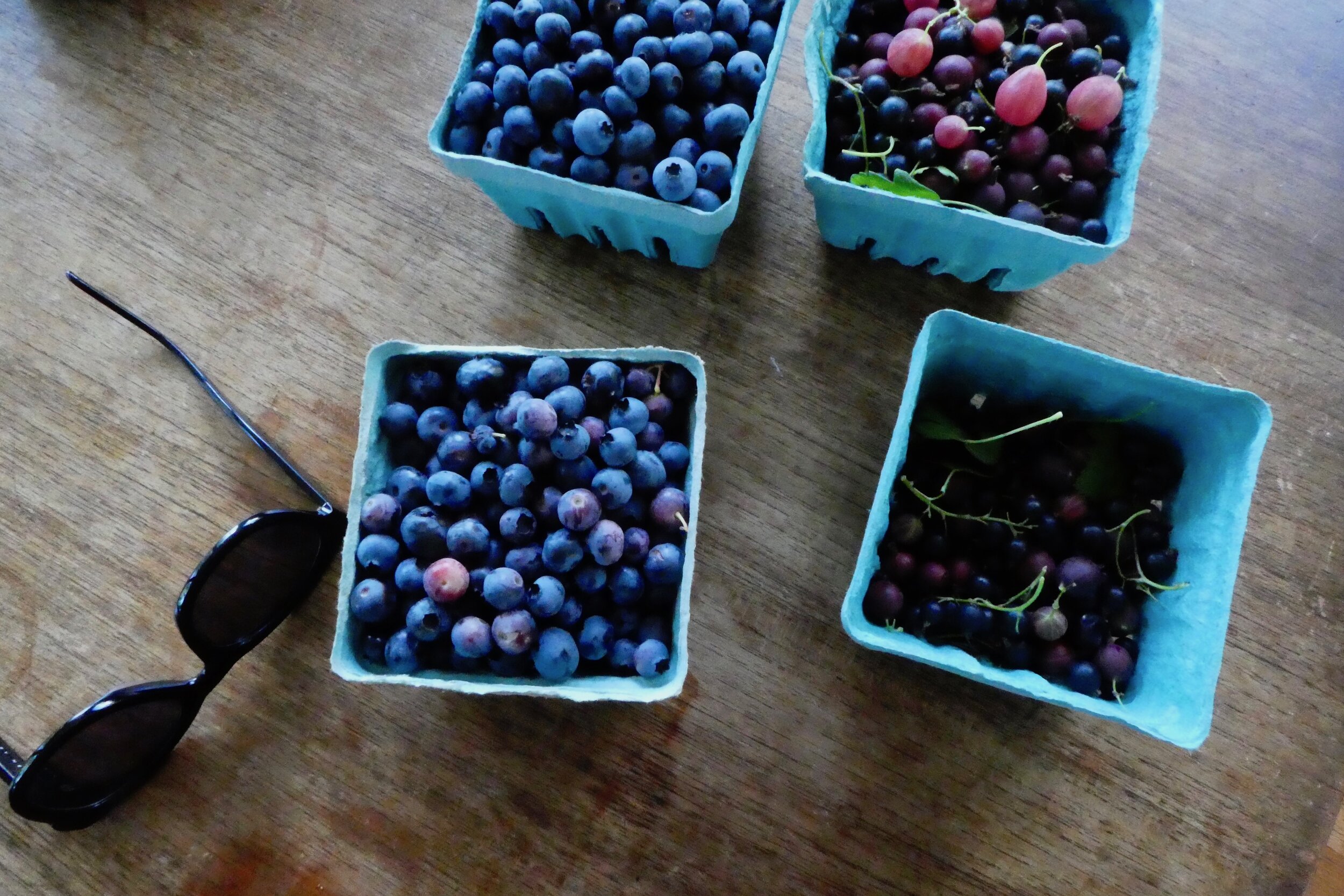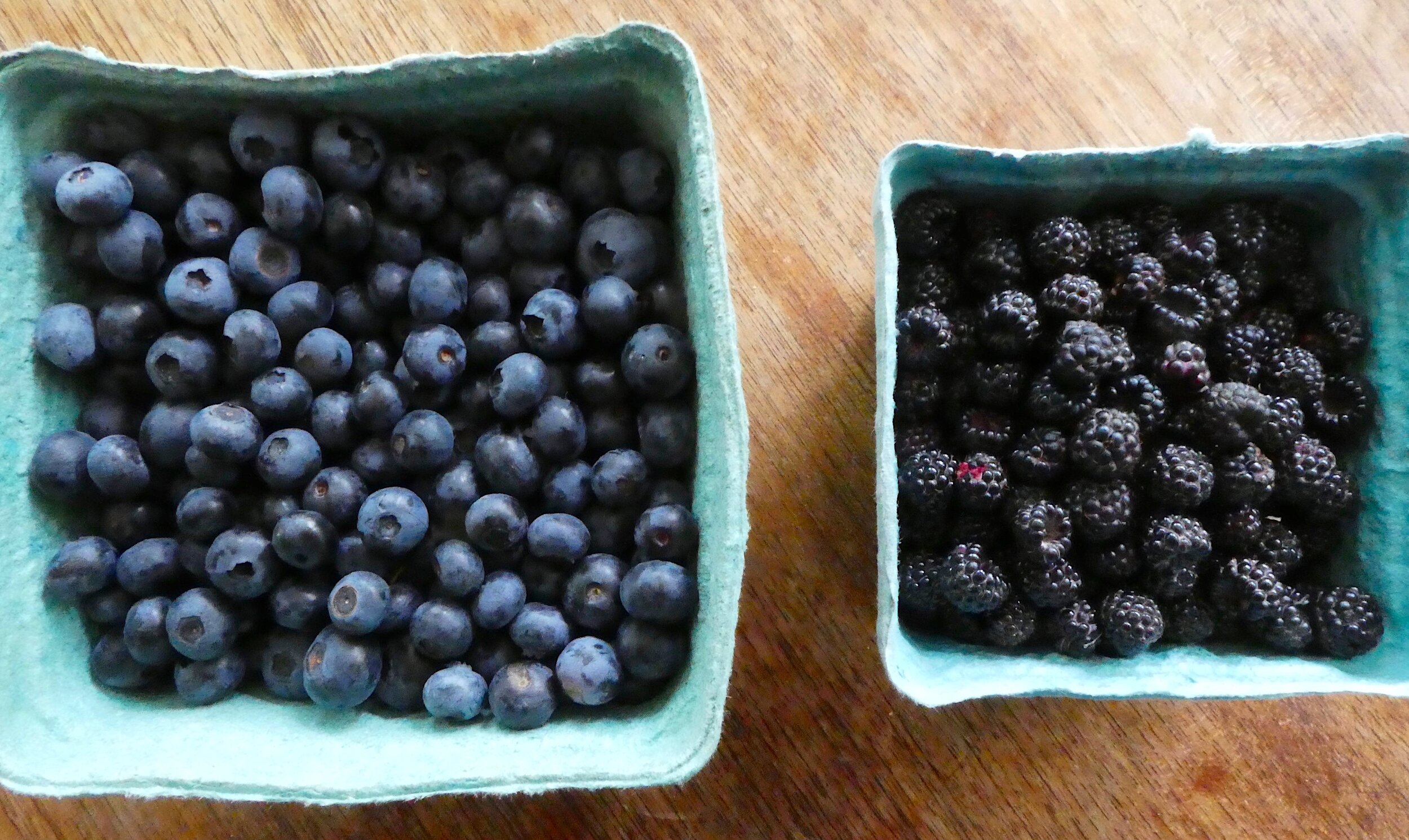This recipe from Danny Bowien is one that first appeared in “…an endless banquet” way back in 2013—in an entirely different era—but the recipe itself is a keeper, and it’s one that we’ve returned to again and again, especially around this time of year. In fact, the first time it appeared in these pages was on February 24, 2013.
Our latest batch of congee, made just last week, was a response to winter 2021, out of a need for the kind of comfort only chicken soups of all kinds can offer—because that’s essentially what this version is: a supremely comforting, even reassuring chicken soup. But it was also a response to a recent batch of chili-crisp that I made, one that was just begging to be drizzled over a steaming bowl of congee with all the trimmings (or at least some of them).
fig. a: AEB chili-crisp
In addition to the chili-crisp, we dressed our bowls of congee with an assortment of vegetable and herbal accompaniments: simple stir-fried cabbage, simple stir-fried shiitake and cremini mushrooms, chopped scallions, cilantro, an oil-fried egg, and toasted sesame seeds.
If you’ve never made congee before, it’s an incredibly nourishing meal. It’s easy to feed a large crowd with it (as many as 10-12), but it’s also great for a small household—like ours—because the leftovers are equally phenomenal and it freezes well. You could scale back the recipe, but unless you’re without freezer space or you live in a temperate climate and don’t have access to an “outdoor freezer” like we do here in Montreal, what’s the point? I guarantee that you’ll be thrilled to have extra portions on hand in the coming days and weeks. I certainly have been. When I had a bowl for lunch the other day, this is what my simplified version looked like:
fig. b: chicken congee, cabbage, cilantro, chili-crisp
Though this particular recipe is all about the chicken—it has everything to do with the wonderfully silky texture that is created as the rice cooks with a cheesecloth-bound chicken suspended in it, as well as the lovely perfumed qualities the chicken takes on as it is poached in the rice—it’s quite possible to make a delicious vegetarian (vegan, actually) version of congee. Just cook the rice in a flavourful and highly umami-rich vegetable broth (one that makes great use of dried shiitake mushrooms, say). When Michelle used to prepare congee at the Foodlab years ago, she did exactly that. Their congee was entirely vegan, as were many of the topping options—and all the more popular for it. And recently I’ve seen another Danny Bowien congee recipe, one for an entirely vegan (or at least easily vegan-ized) kabocha squash version, kicking around on the internet.
Lastly, it’s my understanding that congee is not a traditional offering during lunar new year celebrations. It’s too simple. It’s not considered festive enough. But as many people have noted, the fact that 2021 is the Year of the Ox seems somehow appropriate in the midst of an ongoing global pandemic, given the fact that this astrological sign has everything to do with resilience. And the ox is nothing if not a reliable animal, of course. So now might perfect time for congee: it’s as reliable and comforting a dish as they come, and it’s the kind of recipe that makes for an especially tasty and satisfying show of resilience.
Without any further ado, here’s our AEB take on Danny Bowien’s congee recipe, one that first appeared in the “Chinatown” issue of Lucky Peach back in the fall of 2012:
Chicken Congee
1 whole chicken, preferably with head and feet
1 celery stalk
1 carrot
2 cups white rice
8 qts water
cheesecloth
2 chopsticks
toppings of your choice (such as toasted sesame seeds, chopped cilantro, egg yolks, salmon roe, smoked eel, sea urchin, etc.)
Salt the chicken heavily inside and outside the cavity. Make sure you rub salt under the wings. Stuff the cavity with the carrot and celery stalk. Refrigerate overnight.
Bundle the chicken in a large piece of cheesecloth and tie it off. The cheesecloth needs to be big enough that you'll be able to tie the excess cloth to the side of a stockpot in a knot.
Toast the rice in a dry stockpot over medium heat. Don't rinse the rice first. Here, you want the starches on the surface of the rice to thicken the porridge. Also, be careful not to burn the rice. Stir constantly until it is lightly toasted and aromatic--just a few minutes.
Add the water and bring to a boil over medium heat. Starting with cold water and boiling over medium heat (as opposed to high heat) will yield a lighter, cleaner soup.
Once the porridge boils (be patient, this will take a while), lower the chicken in and tie the cheesecloth to the handle of the pot, so the bird doesn't sit on the bottom and burn.
Vent the pot with a pair of chopsticks by balancing the chopsticks on opposite ends of the pot. Point one toward you, and the other away from you, then rest the lid on the chopsticks. (Bowien notes: "My cooks used to burn this porridge because they thought they knew a better way to vent the pot, but this is the way grandmothers do it. Trust me." We note: this method works perfectly. It both vents the pot and catches the condensation. The result is an ideal cooking temperature and maximum flavour.)
Cook at medium heat for 45 minutes to an hour. The rice should be very soft but not completely exploded into mush. Pull the chicken out and shock it in ice water. Once it's cooled, you can slide it and use it as a garnish or any other application that calls for a nicely poached chicken. Because that's exactly what you get: a nicely poached chicken with hints of rice flavour.
Season with fish sauce and salt. Bowien suggests: "Garnish with chopped cilantro, sesame seeds, an egg yolk, and your choice of toppings--smoked eel, ikura, uni, whatever."
Bowien claims that this recipe produces "4-6 servings," but, in fact, it makes enough for at least 12.












